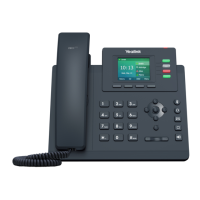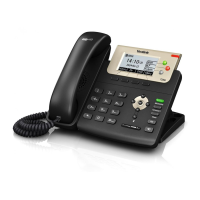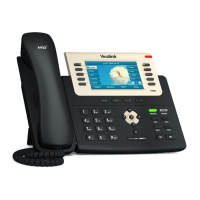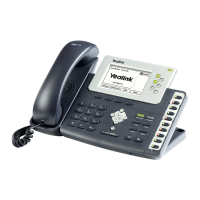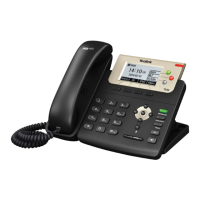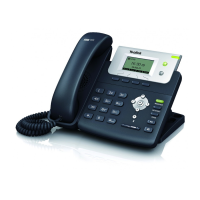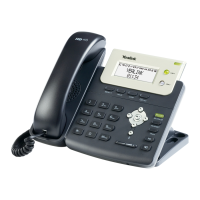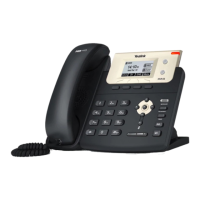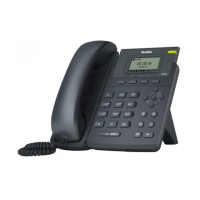Administrator’s Guide for SIP-T2xP IP Phones
66
Always empty for SIP services.
Specifies a DNS name to be used for the next query.
The IP phone picks the first record, because its order of 90 is lower than 100. The pref
parameter is unimportant as there is no other record with order 90. The flag ―s‖
indicates performing the SRV query next. TCP will be used, targeted to a host
determined by an SRV query of ―_sip._tcp.example.com‖. If the flag of the NAPTR record
is returned empty, the IP phone will use "sip:user@example.com" for the next NAPTR
query.
SRV (Service Location Record)
The IP phone performs a SRV query on the record returned from the NAPTR for the host
name and the port number. The following are examples of the SRV records returned:
Priority Weight Port Target
IN SRV 0 1 5060 server1.example.com
IN SRV 0 2 5060 server2.example.com
Parameters are explained in the following table:
Specifies preferential treatment for the specific host entry.
Lower priority is MORE preferred.
When priorities are equal, weight is used to differentiate
the preference. The preference is from highest to lowest.
Again, keep the same to load balance.
Identifies the port number to be used.
Identifies the actual hosts for ―A‖ query.
The two SRV records point to different hosts. The two records have the same priority 0.
The weight of the second record is higher than the first one, so the second record is
picked first. If there is no IP address returned in the response, the IP phone sends out the
―A‖ query to look up the IP address. So in this case, the IP phone will use
"server2.example.com" for the A query.
A (Host IP Address)
The IP phone performs ―A‖ query on the record returned from the SRV for the host IP
address. The following is an example of the returned ―A‖ record.
IN A 62.10.1.10
